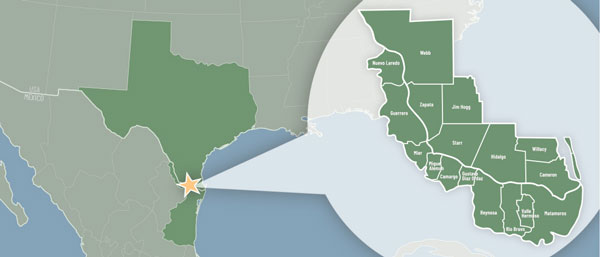If there is one thing to know about doing business in Texas, it’s that the state is ready to work.
Over the course of 22 years, Texas has seen an influx of 9 million new residents, according to the U.S. Census Bureau. The top five cities — Houston, Austin, Dallas, San Antonio and Fort Worth — account for 263,408 of those moves. So it’s no surprise that the state growing at a higher rate than the rest of the country.
These numbers prove that new residents aren’t simply flocking to the state’s largest metros but are landing throughout every region of Texas, sending the message that abundant opportunity and quality of life can be found outside of an urban landscape.
According to Site Selection’s 2023 Governor’s Cups, which saw Texas secure the No. 1 ranking for corporate facility investments, the state landed 1,254 projects in 2023. The state also created a staggering 326,700 jobs.
This economic growth has been consistent year after year. Who’s to thank? When these projects are broken down on a regional scale, it is clear that the collaborative effort to leverage resources among local economic development organizations has been a critical play.
 COSTEP supports economic development in a number of Mexico municipalities and Texas counties.
COSTEP supports economic development in a number of Mexico municipalities and Texas counties.
Map courtesy of COSTEP
Building Down South
Such is the case for Council for South Texas Economic Progress (COSTEP) CEO Adam Gonzalez, who says a win for one area of South Texas is a win for the whole region.
COSTEP is a non-profit organization, launched in 2020, that services the Rio South Texas region, encompassing 10 municipalities in Mexico and seven counties in Texas. On a day-to-day basis Gonzalez and his team’s outreach efforts work to connect potential corporate investors with local economic development and governmental entities to find the right fit.
“We act more as the tip of the spear and we go back to hunt for new opportunities,” says Gonzalez.
A welcomed change as a result of launching during a global pandemic was the increased demand for nearshoring capabilities. For domestic or international companies looking to meet supply chain needs, this region provides a wealth of resources. Talent is no question with a combined 5.2 million workforce concentration in both Texas and Mexico. In addition, the region supports direct access to Interstates, rail, international airports and a deepwater seaport.
Those two assets alone provide benefits to the entirety of southern Texas. While a certain level of competition exists between these communities, regardless of where a company decides to locate its site, the economic opportunities created span hundreds of miles.
“Everybody wants a project in their community, but everybody benefits from the jobs and the revenue stream that comes from those investments,” says Gonzalez.
When a company is ready to invest or expand, the site selection process depends on a number of critical needs. Site readiness, quality infrastructure and incentives play a powerful role in securing the deal. Gonzalez notes that a singular organization can’t do it all, which makes collaborative use of expertise or resources vital to attracting business.
“When we try to sell ourselves as one community, bigger organizations might look at us as being too small,” says Gonzalez. “But when they see that the whole region is working together to attract business, they know that we’re going to collaborate, both at the private industry level and at the governmental level, to make that organization a success in the region.”
Not only does this team effort aid to expedite these processes for companies but it also demonstrates the attitude of support a company can expect while operating here.
This approach helped the city of Brownsville, located in Cameron County, attract a $116.5 million expansion from food manufacturer Rich Products. During a signing ceremony for the deal, Plant Manager Eddie De La Rose said the project would’ve been difficult to do without support from the city and the Greater Brownsville Incentives Corporation (GBIC).
“This level of collaboration supports Rich Products’ expansion in its operations, creating over 100 new job positions and with our assistance, training for all of them. These jobs benefit their employees and their families and contribute significantly to the local economy, adding more than $4 million in salaries to the community,” says GBIC Deputy Executive Director Jerry Briones.
The company was able to receive a 10-year tax rebate, through Chapter 380 of the Texas Local Government Code, on property taxes as a result of the expansion. The Rich Products expansion is just one example of the partnership that translates across all potential projects that come to the city. Briones notes that by leveraging strengths in terms of resources like workforce training, incentives, tax abatement programs and land acquisition assistance allow for a proactive approach to securing investment.
“Our collaborative efforts ensure businesses investing in Brownsville receive tailored support and resources to thrive,” says Briones. “Exceptional assistance and proficiency in securing and delivering incentives at both the local and state levels sets us apart.”
The Northern Connection
Representative of one of the fastest growing metropolitan areas in the nation, the boom of the Dallas-Fort Worth metro can be attributed to strategic thinking and commitment to a forward-looking vision.
For Dallas Regional Chamber Senior Vice President Mike Rosa this approach has been fundamental throughout his 36 years working for the Dallas and Fort Worth Chambers. The Dallas Regional Chamber operates as a marketing group, providing that one-stop-shop for information exchange and distribution of opportunities to secure the perfect site.
Regional communities in the area like Arlington, Irving and Frisco may have differing visions from Dallas or Fort Worth or one another due to their respective histories and industry strengths. So through the lens of teamwork, collaboration on matters such as public policy, transportation funding and economic development projects is the approach that has worked in drawing new opportunities. This strategy can best be seen through the creation of the Dallas-Fort Worth International Airport back in 1974.
 Photo: Getty Images
Photo: Getty Images
“This way of thinking started back with the international airport created by Fort Worth and Dallas,” says Rosa. “Two cities got together and said, ‘Let’s have this one great airport,’ which was sort of a marker of regional cooperation. Ever since then we’ve realized that works pretty well, let’s keep doing that.”
Central location in the U.S. provides that initial pull for domestic and global businesses. In combination with direct access to rail, Interstates, an international airport and fiber optics, these assets have served as an accelerant for growth and diversity in landing new project investment and corporate headquarters.
That serves as the basis of what Rosa calls a “layered cake” of what the region has to offer.
“The next layer would be the tremendous production and talent coming from colleges and universities here in Dallas-Fort Worth. The next layer is the pull for students in the South Central U.S. region drawn here for job opportunity,” says Rosa. “Another layer is when companies relocate here, they know that this is a place where if they want to bring employees, the employees will want to be here. We stack these layers up and it is really effective for companies to look at when they consider where they want to go.”
For all these ingredients to combine cohesively, communication and understanding of your team is essential for this connection to work. Leadership naturally changes, so for Rosa it is important for healthy relationships to exist among these communities.
“When opportunities come knocking, or we generate opportunities, you want your team to know each other. The worst thing I could do is pull together a meeting and nobody knows each other. We can’t even start the project with no understanding or organization. So we established this platform, not in a structured way but rather a network, that keeps us connected and working on projects together.”
Focus on this level of relationship building spans beyond just north Texas. It is what helped Dallas secure the headquarters for an Advanced Research Projects Agency for Health (ARPA-H) Customer Experience Hub in September 2023. A collaborative effort among Dallas, San Antonio, Austin, Houston and stakeholders in El Paso and College Station will result in the next generation of R&D capabilities for science and medicine.
“The HQ itself is here in Dallas, but it really was a Texas bid. Other metros and leaders from around the state rallied behind that, because they know that wherever the HQ was in Texas it was going to yield tremendous opportunities and benefits,” says Rosa. “It was terrific cooperation at the state level, in addition to the cooperation we’re accustomed to within the region.”
As Texas continues to tote the nation’s best business climate, this commitment to viewing economic development as a team sport is a quality that is prevalent across every Texas community. Organizations and leadership that are cognizant of what resources and strengths a location provides, and what would best suit a company’s operations, have cemented trust among businesses and communities alike.
Chaos is not in Texas’ vernacular, but streamlined is. If a future in Texas is under consideration, companies know that a network of collaborative expertise is available every step of the way.

